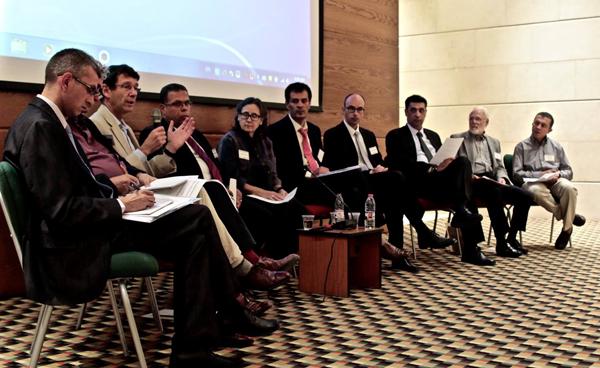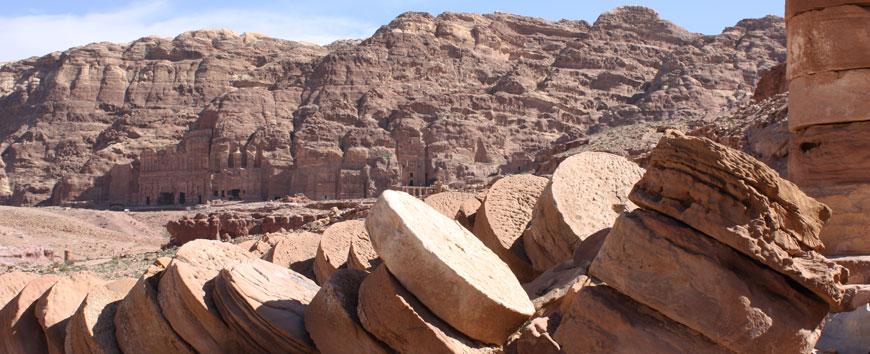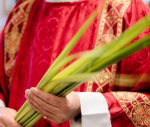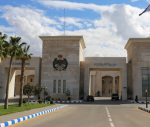You are here
Sharjah hosts MENA heritage preservation conference on protection policies, strategies
By Saeb Rawashdeh - Dec 09,2018 - Last updated at Dec 11,2018
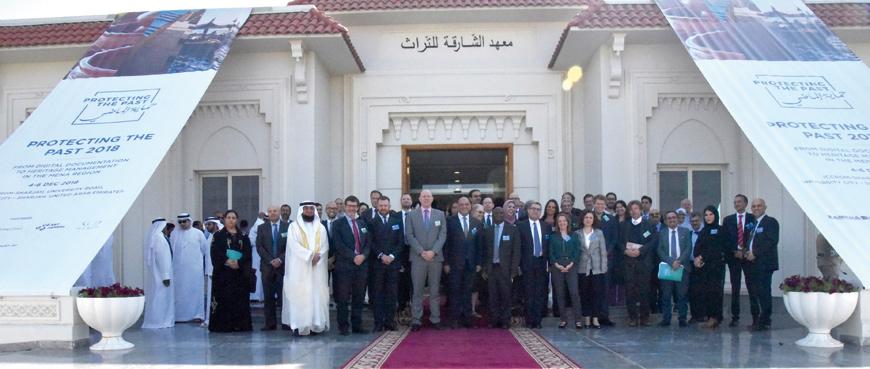
Participants of the Protecting the Past conference pose for the group photo on Thursday (Photo courtesy of ICCROM-Sharjah)
AMMAN — Cutting-edge technology was put at the service of endangered cultural heritage in order to ensure its accurate documentation, said a scholar reflecting on the Protecting the Past conference organised in Sharjah from December 4-6.
This session triggered a debate about financing priorities and what needs to be done to make sure that MENA-based organisations are able to attract more funding for cultural heritage projects in the coming years, said Andrea Zerbini, assistant director of the CBRL British Institute in Amman and research associate at Endangered Archaeology of the Middle East and North Africa (EAMENA).
The event was jointly organised by the Regional Conservation Centre in Sharjah (ICCROM-Sharjah), EAMENA, Art Jameel and the Global Heritage Fund, an official statement said.
It involved more than 50 regional and international speakers, including representatives from Egypt, Jordan, Iraq, Libya, Morocco, Palestine, Saudi Arabia, Tunisia and the United Arab Emirate.
“The conclusions of this international conference highlighted the importance of documenting cultural heritage sites in the MENA region as basis for future protection and conservation of endangered archeological sites,” noted Zaki Aslan, director of ICCROM-Sharjah.
While the means, tools and technology vary, the objectives are to be clear from the outset, he stressed.
Furthermore, at the core of these strategies is the aim to enhance national institutional and legal capacities, to engage various audiences, beyond professionals and specialists to policymakers, reaching out effectively to communities in the process, Aslan said.
“Another major issue, highlighted by experts, was the lack of appropriate infrastructure for hosting huge datasets,” added Zerbini.
The legal aspect of cultural site protection is one of Aslan’s main concerns: “Future actions will have to lead to this vision and enforcement of up-to-date legal measures to be institutionalised so that incentive, inter-sectoral, participative, as well as preventive approaches are embedded in the heritage laws and institutional strategies responsible for protecting heritage against vandalism, looting, destruction and illicit trade.”
The region is witnessing severe destruction of cultural sites due to armed conflict, Aslan underlined.
Therefore, he explained, the issue has been the subject of last year’s Louvre-Lense Museum, as well as other conferences in Rome and in Warsaw earlier this year.
“The essence of these strategies is based on the community-centred approaches, international doctrine and principles of reconstruction based on place-based approaches and values of a historic place… These issues will be subject of workshops we will hold in early 2019 with partners, based on case studies and recent experiences in war zones,” Aslan highlighted.
“Coupled with training workshops planned for police, military personnel and customs, these strategies have been at the heart of our work for the current and the coming years,” he concluded.
Related Articles
AMMAN — Northern Jordan’s archaeological and historical significance remains underexploited and little known, despite its huge cultural sign
AMMAN — “Often, we are asked a question: ‘Why should we bother with cultural heritage while there are humanitarian crises, like in Syria?’”
AMMAN —The "Siq Stability" project has been shortlisted among 14 projects to win ICCROM-ATHAR Regional Conservation Centre Award, the Jordan


